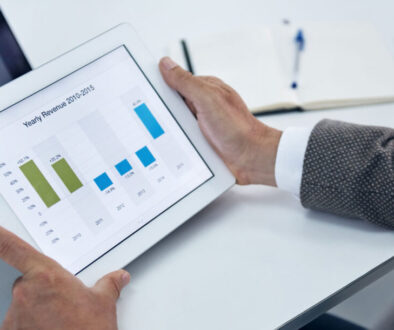10 Key Metrics for Analyzing Commercial Real Estate Investments
10 Key Metrics for Analyzing Commercial Real Estate Investments
Commercial real estate investment can be a lucrative venture, but it comes with its own set of challenges and risks. Understanding the key metrics that drive the success of commercial properties is crucial for investors looking to make informed decisions. In this blog post, we will cover ten essential metrics that every commercial real estate investor should consider. From assessing cash flow to evaluating market trends, these metrics will provide you with the insights needed to make sound investment choices.
Introduction
Investing in commercial real estate offers opportunities for substantial returns, but it requires a keen understanding of various factors that contribute to a property’s value and performance. Analyzing key metrics is essential for assessing the potential success of a commercial real estate investment. Whether you are a seasoned investor or just starting in the market, having a grasp of these metrics will equip you with the knowledge necessary to evaluate properties effectively. This article will delve into ten critical metrics that can help you navigate the complexities of commercial real estate investments.
1. Net Operating Income (NOI)
- Net Operating Income (NOI) is a fundamental metric that measures a property’s revenue after all operating expenses have been deducted. It provides a clear picture of the property’s profitability.
- To calculate NOI, subtract operating expenses (such as property management fees, maintenance costs, and property taxes) from total rental income.
- For example, if a commercial property generates $500,000 in rental income and incurs $200,000 in operating expenses, the NOI would be $300,000.
- Understanding NOI is crucial as it forms the basis for further evaluations, including cash flow analysis and capitalization rate calculations.
2. Capitalization Rate (Cap Rate)
- The Capitalization Rate, or cap rate, is a critical metric for assessing the expected return on an investment property. It is calculated by dividing the NOI by the property’s current market value.
- For instance, if a property has an NOI of $300,000 and is valued at $3,000,000, the cap rate would be 10% ($300,000 ÷ $3,000,000).
- Cap rates vary by property type and location, providing insights into how a property performs relative to comparable investments. A higher cap rate often indicates a higher risk, while a lower cap rate may suggest a more stable investment.
3. Cash-on-Cash Return
- Cash-on-Cash Return measures the cash income generated by a property relative to the cash invested in it. This metric helps investors evaluate the immediate profitability of their investment.
- To calculate cash-on-cash return, divide the annual pre-tax cash flow by the total cash invested. For example, if an investor puts in $1,000,000 and receives $100,000 in annual cash flow, the cash-on-cash return would be 10%.
- This metric is particularly useful for investors who rely on cash flow to cover debt service and operational expenses.
4. Debt Service Coverage Ratio (DSCR)
- The Debt Service Coverage Ratio (DSCR) is a measure of a property’s ability to cover its debt obligations. It is calculated by dividing NOI by the total debt service (loan payments).
- A DSCR of less than 1 indicates that the property does not generate enough income to cover its debt, while a ratio above 1.2 is generally considered financially healthy.
- For example, if the NOI is $300,000 and the annual debt service is $250,000, the DSCR would be 1.2 ($300,000 ÷ $250,000). A higher DSCR indicates lower risk for lenders and investors alike.
5. Gross Rental Yield
- Gross Rental Yield provides a quick snapshot of a property’s income-generating potential. It is calculated by dividing the annual rental income by the property’s purchase price.
- For example, if a property is purchased for $1,000,000 and generates $80,000 in annual rental income, the gross rental yield would be 8% ($80,000 ÷ $1,000,000).
- This metric helps investors compare properties and make informed decisions based on potential rental income relative to investment cost.
6. Occupancy Rate
- The occupancy rate is a vital indicator of a property’s performance. It represents the percentage of leased space compared to the total available space.
- A high occupancy rate signifies strong demand and effective property management, while a low rate may suggest market challenges or management issues.
- For example, if a commercial building has 100,000 square feet and 80,000 square feet are leased, the occupancy rate would be 80% (80,000 ÷ 100,000). Monitoring occupancy rates can help investors assess the property’s market position.
7. Tenant Quality and Lease Terms
- Evaluating the quality of tenants and the terms of their leases is crucial for understanding the stability of cash flow. Look for long-term leases with reliable tenants, as these reduce vacancy risks.
- Consider factors like tenant creditworthiness, lease duration, and rent escalation clauses. A strong tenant can provide consistent cash flow, while a weak tenant may increase the risk of vacancy and turnover.
- For instance, a property with a credit-rated tenant on a 10-year lease is generally more valuable than one with multiple short-term leases and lower-rated tenants.
8. Market Trends and Comparisons
- Understanding market trends and comparing properties within the same market is essential for making informed investment decisions. Analyze factors such as local economic indicators, job growth, and demographic shifts.
- Pay attention to the performance of similar properties (comps) in the area. Look at their rental rates, occupancy levels, and any recent sales to gauge your investment’s potential.
- For example, if similar properties in the area are experiencing rising rents and low vacancy rates, this trend may indicate a favorable investment environment.
9. Expense Ratio
- The expense ratio measures the proportion of operating expenses relative to total revenue. It is essential for understanding how efficiently a property is managed.
- To calculate the expense ratio, divide total operating expenses by effective gross income (EGI). A lower expense ratio indicates better management and higher profitability.
- For instance, if a property has $300,000 in operating expenses and $500,000 in EGI, the expense ratio would be 60% (300,000 ÷ 500,000). Striving for an expense ratio below 50% is often considered ideal in commercial real estate.
10. Return on Investment (ROI)
- Return on Investment (ROI) is a critical metric that measures the gain or loss generated from an investment relative to its initial cost. It provides a comprehensive overview of an investment’s performance.
- To calculate ROI, subtract the initial investment cost from the total returns and divide by the investment cost. For example, if an investor spends $1,000,000 and later sells for $1,200,000, the ROI would be 20% (($1,200,000 – $1,000,000) ÷ $1,000,000).
- ROI is essential for comparing the profitability of different investments, helping investors allocate their resources effectively.
Conclusion
In summary, analyzing commercial real estate investments requires a thorough understanding of various metrics that influence property performance and profitability. Metrics such as Net Operating Income, Capitalization Rate, and Cash-on-Cash Return are essential for evaluating potential investments. By employing these ten key metrics, investors can make informed decisions, mitigate risks, and maximize returns in a competitive market. As you embark on your commercial real estate journey, remember to keep these metrics at the forefront of your analysis and always stay informed about market trends and conditions. Contact us today to explore our listings or seek professional advice on your next investment opportunity.



